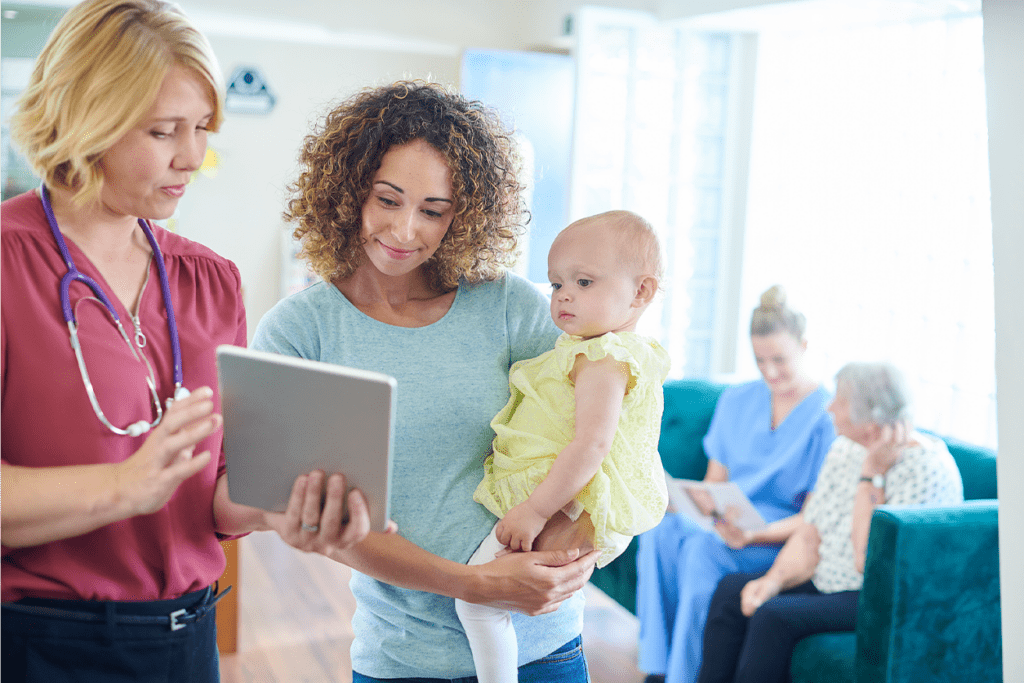
Promoting health literacy reduces health disparities, improves community health outcomes, and builds a path toward health equity.
Health literacy for individuals and organizations is essential to promoting public health. But what exactly is health literacy? For individuals, it’s the ability to find, understand, and use health-related information and services.
People with high health literacy are empowered to make informed decisions about their health and well-being. They feel confident asking questions of providers and understand messages about their health.
On the other hand, individuals with limited health literacy often face barriers in accessing appropriate services and comprehending health information. They may not understand health forms they are asked to fill out or know how to schedule appointments or seek follow-up care.
This is where organizational health literacy becomes critical.
U.S. health literacy report card
How does the United States score on health literacy? A study by the Institute of Education Sciences that tested adults’ ability to use printed health information found one-third of Americans had basic or below basic levels of health literacy. Fifty-three percent had an intermediate level, and only 12 percent had a proficient level.
Keep in mind that socioeconomic circumstances have no impact on these findings. And on any given day, a person’s fatigue, fear, illness, and other factors can impact their health literacy level.
How to champion health literacy
With people’s health at stake, healthcare providers, community-based organizations (CBOs), and public health entities must promote health literacy by providing accessible and easily understandable health information to patients. This can range from clearly identifying staff with name badges to teaching patients to navigate their digital health portal.
Primary.Health champions health literacy by empowering communities with an easy-to-use tech-enabled clinical experience. Our software includes the following features that meet and support patients where they are – on the phone, online, or on site:
- Clear and simple instructions for testing, vaccinations, and treatment options
- Ability to make an appointment or speak to a clinician
- Simplified digital consent and registration forms
- Automated appointment reminders & test results
- Platform availability in 20+ languages
- A language line with support in English and Spanish and a translation service for other languages.
- SMS and email communications options our partners can customize to patients’ preferred language
- Built-in health updates and education, including “how-to” videos on using Primary.Health app, collecting at-home test samples, and more
- Dedicated telephonic and email support during business hours
- Digital storage of all patient/family health information
- Easy-to-use clinic search directory for patients to find care
We work with our community partners to customize the clinical experience to the needs and goals of their population.
Health literacy self-check
Is your organization doing everything it can to promote health literacy? Here are some suggestions from the Agency for Research and Quality (AHRQ) to get you started:
- Train staff in health literacy practices.
- Create a welcoming environment, from your website or reception area to your examination, procedure, or inpatient rooms.
- Communicate clearly, using plain language and visual aids such as models, pictures, or videos.
- Create written materials in multiple languages that are easy to understand and act on. Make time to review these materials with patients.
- Bridge the digital divide by making websites, apps, and patient portals easy to access, navigate, and understand.
Primary.Health promotes health literacy by empowering communities to provide simple, easy-to-use testing, vaccinations, and preventive care. Partner with us today to make healthcare simple, accessible, and understandable for your population.
